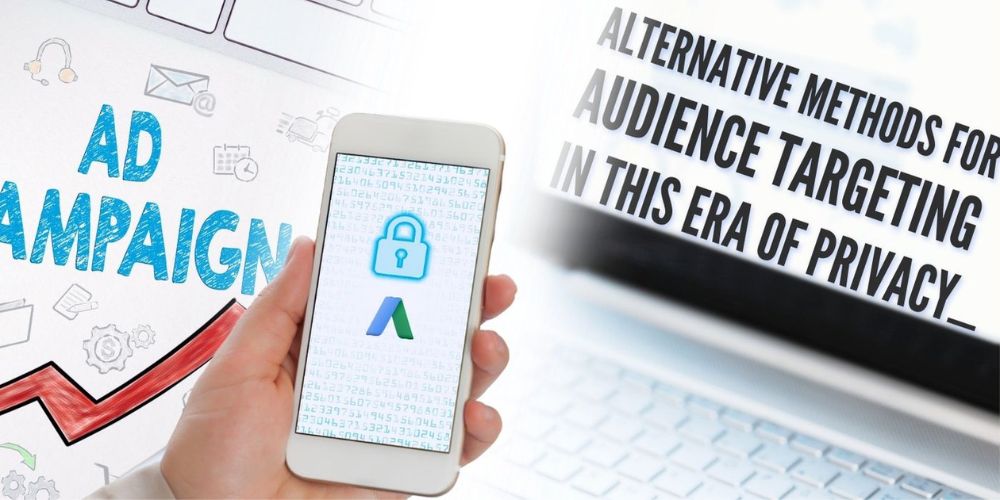Alternative Methods for Audience Targeting in a Privacy-conscious Landscape

For over a decade, we’ve been refining our online audience targeting methods, and just when we think we have our strategies down pat, Google throws another big change in our direction. And this vicious cycle goes on. The consumers’ behavior is also changing. Today they aren’t just looking for products and services; they’re also searching for businesses they can trust with their data. This has made it difficult for businesses to target the right audience due to privacy regulations.
In fact, by the latter part of 2023, Google will cease supporting third-party cookies due to how this practice of data collecting infringes on the privacy of users. These developments can be partly attributed to some governments that are stepping in to regulate data usage. For example, the EU adopted the General Data Protection Regulation, which requires webmasters to obtain user permission before using Google’s cookies to eliminate this data tracking method.
Thus, we’ll have to pivot to targeting specific audiences without the data derived from third-party cookies. The third-party cookies enable B2B marketers to look closely at customers’ habits as they shop online and provide insight into buyer intent. This is where they find the campaign audience they need to target for leads and impressions, but without this information, advertising will become difficult and, as a result, more expensive for businesses that need the advertising. Furthermore, gaining valuable information about who to target is not the only worry. In the cookieless environment, marketers will have difficulty assessing the performance of their campaigns.
The important question is, how can one prepare for this new normal regarding data collection? And will it be possible to run a campaign effectively and pivot on a moment’s notice if the data deems it necessary? We’ll explore possible solutions and ways to adapt your marketing strategies minus the access to cookies.
First-Party Data Utilization:
Rather than relying on a third party, you will have to look at the possibility of collecting the data yourself while still honoring the boundaries of users’ privacy. Look to other means of gaining insight into your audience’s interests and purchasing habits while still keeping their trust.

Harnessing your own first-party data for audience targeting
First off, you’ll need to leverage the resources you already have to target the audience. Fortunately, first-party or direct data is going to be your most accurate source since it reflects your customers’ current interactions with your brand. So think in terms of the habits reflected by the members of your rewards program, your email subscribers, customer reviews, and of course, the in-person shoppers and what they buy on a consistent basis. And with the latest customer intelligence solutions, you’ll be able to manage and apply this data to your audience retention and targeting tactics.
Leveraging customer relationship management (CRM) data
Additionally, you can utilize the CRM data that reflects the customer’s actions once the purchase is complete or about to happen. For instance, customers leave behind a lot of information when they sign a service contract or opt for a warranty. In fact, one of the most telling informational sources is the customer satisfaction survey. Even when a customer submits a complaint, helpful details can be extracted from that, but for that, you’ll need a program or tool, such as Salesforce, to gather, store, and disaggregate the data. Of course, there are many more such applications in the market based on your business’s needs. As long as you integrate the following practices, you’ll gain all the insights you’ll need:
- Reporting (the data)
- Showcasing your data as comprehensibly as possible
- Using the insights for creating and launching a personal outreach strategy
- Improving all processes involved in your CRM system
Once you have this system ready, you can gather the information to seek out new customers with similar interests as your existing clientele.
Strategies for collecting and utilizing consented user data
Before we go any further, we’ll touch upon tactics to gain consented user data. After all, asking permission first, in this online climate, will be instrumental in keeping your audience’s trust–while still getting the numbers you need. So, we’ll start with quantitative and qualitative data. It is vital in audience targeting while exposing the weaknesses in your site’s functionality or your campaign’s effectiveness.
Here are some strategies you can use for collecting and applying consented user data:
- Take a cue from the EU. Getting explicit verbal or written consent from customers builds trust in your business which makes it an effective practice
- Stay transparent. Ideally, you should inform customers how their data will be used and how long you plan to store it. Go a step further in building trust by enabling them to access and even delete their data.
- Don’t skimp on security. With so many bad actors out there vying for other people’s personal information, you need to uphold and invest in security measures.
- Hire or appoint someone to oversee the security side. While this sounds like an additional expense, having a live person to monitor the security measures is critical prevention.
- Review consistently and report. Keep up-to-date on the status of your data storage and report any breaches (or even attempts) to proper authorities immediately. This process also involves informing your customers.
Privacy-Compliant Remarketing:
Transparency is vital, but you can also integrate remarketing tactics into your targeting strategy. Cookies provide most of the data for remarketing, so you need to change your data collection methods accordingly. For instance, updating your privacy policy to include information about personalized advertising is vital along with giving customers a choice to opt out. With this approach in mind, we’ll look at alternatives for data collection for remarketing.
Exploring alternative identifiers and methods for remarketing
For one thing, you may end up relying on the previously mentioned first-party cookies but more specifically, those that enhance the functionality of your website. For websites, cookies help prevent abandoned carts by “remembering” which items were chosen. If your potential customer agrees to your privacy policy and terms, they will get some sort of reminder. In the case of remarketing, it might be an email or text. In fact, emails would play a huge role in remarketing by sending out reminders to reorder or renew a subscription or by giving a link to leave a review. All in all, this tactic would target repeat customers who, through their recommendations, would bring in new customers.
Additionally, you may have to ramp up your content marketing efforts to drive more traffic to your website and consider coming up with a membership/loyalty program or a subscription which will also generate more first-party data to target your audience.
Collaborative audience targeting:
And don’t forget that the competition can be your friend–so to speak. Working with businesses that provide a similar product and service can be a win-win for both of you, especially in today’s online climate. With the latest tech, side-by-side advertising can be the most effective strategy for lowering marketing costs, reaching a broader audience, and increasing sales.

Embracing new advertisement formats
As you can tell, you’ll have to get a little more creative when it comes to your targeting alternatives, but what doesn’t require a Plan B?
For instance, try leveraging your social media presence and post some polls and questionnaires. Analyze data that you receive from your current clientele to target those who have not yet visited your site. For instance, some companies that offer subscriptions based se closely watch their customers’ preferences and from there, target a similar group through social media, emails, or informative articles.
Cross-device and cross-channel targeting
Finally, you might explore cross-device and cross-channel targeting. Starting with cross-device targeting, you can integrate deterministic or probabilistic practices or both. Probabilistic, though more complex, presents an option if you don’t have the means to verify if the same user is employing multiple devices. Regardless, both strategies have the potential to efficiently target your audience and gain insights into their interests without the invasion of privacy.
Cross-channel targeting can be utilized in conjunction with the cross-device tactic to reach your audience through most (if not all) of their means of work and entertainment–from audio/video streaming to gaming. With this many channels to work with, you can run ads on multiple platforms that are sure to engage your audience. While the latest trends in users’ privacy and upholding your own transparency pose a challenge, you can still take alternate routes toward obtaining accurate data. After all, in the digital marketing world, change tends to be the only constant.
Recent Posts

SEO vs SEM: Does SEM Help With SEO?
April 15, 2024

How to Symphonise AI and SEO
January 31, 2024

2024 Search Engine Optimization Checklist
January 1, 2024

